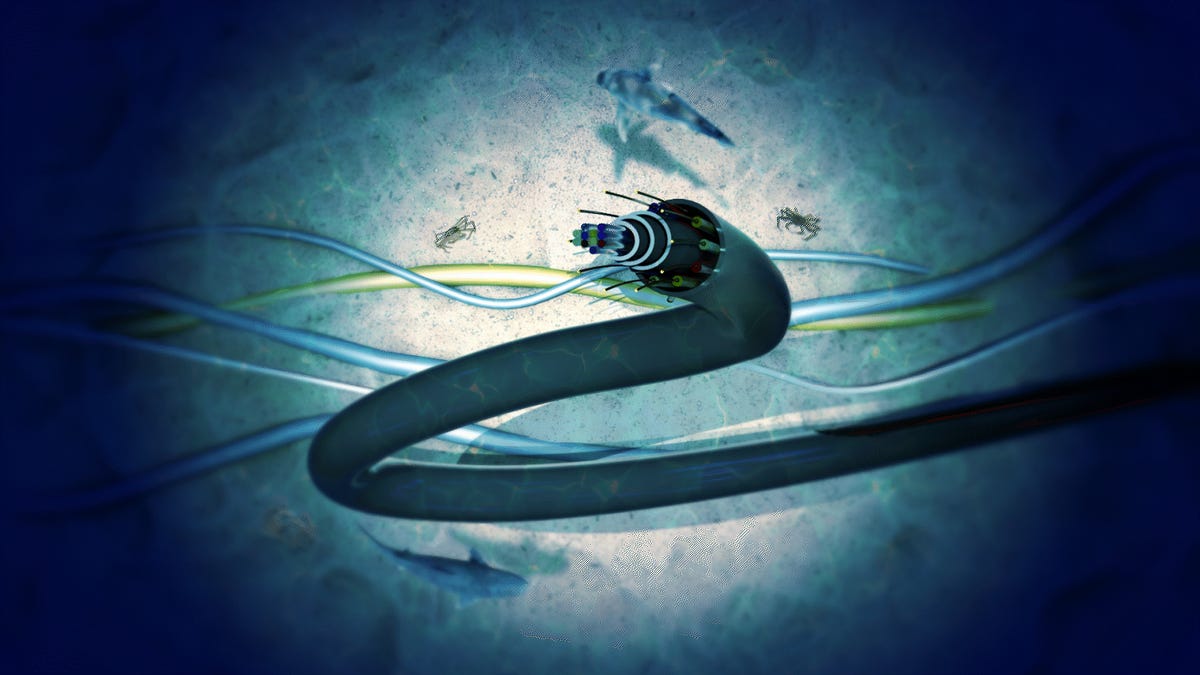The Secret Life of the 500+ Cables That Run the Internet

- Author: CNET
- Full Title: The Secret Life of the 500+ Cables That Run the Internet
- Category: articles
- Document Tags: #tech
- URL: https://www.cnet.com/home/internet/features/the-secret-life-of-the-500-cables-that-run-the-internet/
Highlights
- And yet subsea cables are low-tech, too, coated in tar and unspooled by ships employing basically the same process used in the 1850s to lay the first transatlantic telegraph cable. SubCom, a subsea-cable maker based in New Jersey, evolved from a rope manufacturer with a factory next to a deep-water port for easy loading onto ships (View Highlight)
- Though satellite links are becoming more important with orbiting systems like SpaceX's Starlink, subsea cables are the workhorses of global commerce and communications, carrying more than 99% of traffic between continents (View Highlight)
- But as more internet traffic traverses subsea cables, there's also reason to worry about them. The explosive sabotage last year of the Nordstream 1 and 2 natural gas pipelines connecting Russia and Europe was much more logistically difficult than cutting an internet cable the thickness of your thumb. An ally of Russian leader Vladimir Putin said subsea cables are fair game for attack. Taiwan has 27 subsea cable connections that the Chinese military could see as tempting targets in an attack (View Highlight)
- Vietnam's internet performance suffered thanks to outages on all five of its cables for months earlier this year, and the volcanic explosion on the island of Tonga severed it from most communications for weeks. (View Highlight)
- Hyperscalers initially began with investments in others' projects, a natural move given that subsea cables are often operated by consortia of many allies. Increasingly, hyperscalers now build their own.
The result: a massive cable buildout. TeleGeography, which tracks subsea cables closely, projects $10 billion will be spent on new subsea cables from 2023 to 2025 around the world. Google-owned cables already built include Curie, Dunant, Equiano, Firmina and Grace Hopper, and two transpacific cables are coming, too: Topaz this year and, with AT&T and other partners, TPU in 2025. (View Highlight)
- Fiber optic lines transmit data as pulses of laser light. As with terrestrial fiber optic lines, using multiple frequencies of light -- colors, to you and me -- means more data can be sent at once. Network equipment ashore at either end of a cable encodes data into the light for transmission and decodes it after it's received.
Fiber optics are great for long-haul data transmission, but they have their limits. That's why there's a big bulge in the cable every 30 to 60 miles called a repeater, to boost the signal strength.
Repeaters require power, though, and that's where another part of the cable construction comes into play. Outside the fiber optic strands, a copper layer carries electricity at up to 18,000 volts. That's enough to power repeaters all the way across the Pacific Ocean just from one end of the cable, though power typically is available from both ends for greater reliability. (View Highlight)
- Companies installing a cable start by picking a route, surveying the route to dodge marine problems like nature preserves, rough seafloor and other cables. When multiple countries, telecommunications firms and businesses are involved, finding an agreeable route and obtaining permits can be very complex. (View Highlight)
- Subsea cables are pretty tough, but every three days or so, one gets cut, TeleGeography said. The primary culprits, accounting for about 85% of cuts, are fishing equipment and anchors. Ships often will anchor themselves to ride out storms, but the storms push the ships and they drag their anchors. (View Highlight)
- Most of the other cuts are from the Earth itself, like earthquakes and mudslides. Tonga, whose single subsea cable connection was severed by a volcanic eruption, is another example. (View Highlight)
- What keeps me awake at night is large-scale climate events," he said. In 2012, Hurricane Sandy cut 11 of the 12 high-capacity cables that connected the US and Europe, he said. (View Highlight)
- Most cuts occur closer to land, where boat traffic is higher and water is shallower. There, cables are clad in metal armor and buried in the sea floor, but even so, cable cuts are a matter of when, not if. At any given moment, more than 10 cables are typically cut around the world, Google's Quigley said. The worst season for outages is October to December because of a combination of harsher weather and fishing activity. (View Highlight)
- Repairs average two weeks, Ray said, but three or four is common (View Highlight)
- There's only one internet, but strains can show when it connects countries that are at odds, for example when the Chinese government blocks Google and Facebook or US companies sever their connections to Russia's internet. These techno-political tensions have spread to the world of subsea cables. (View Highlight)
